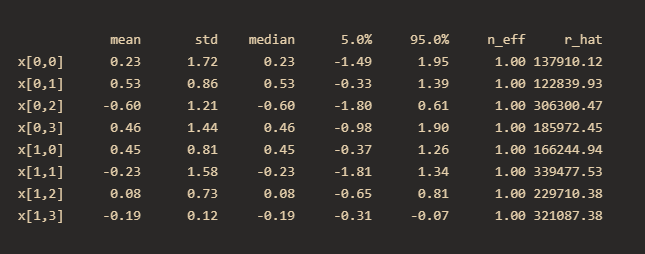Here’s some code I’ve written, but I’m struggling to make sense of how to fix it.
My observed variables consist of two categorical variables. The first variable ranges from [0,1,2], and the second variable ranges from [0,1,2,3]. Therefore, I multiplied logit_p by a specific matrix so that some elements in logit_p become 0. However, I found that the model did not converge after this operation. How can I achieve this goal correctly in numpyro? Are there any tools in numpyro that can facilitate this process?
Thanks in advance!
My code is here:
def test():
# with numpyro.handlers.seed(rng_seed=1):
x = numpyro.sample("x", dist.Normal(0,2).expand([2,4]))
logit_p = jnp.exp(x)*jnp.array([[1,1,1,0],[1,1,1,1]])
p = logit_p/logit_p.sum(axis=-1).reshape(-1,1)
y = numpyro.sample("y",dist.Categorical(p), obs=jnp.array([0,1]))
kernel = NUTS(test)
mcmc = MCMC(kernel, num_warmup=2000, num_samples=2000,num_chains=2)
mcmc.run(random.PRNGKey(11))
mcmc.print_summary()
And my output is here:
